Jin Wei-Kocsis
LLM4Sweat: A Trustworthy Large Language Model for Hyperhidrosis Support
Aug 21, 2025Abstract:While large language models (LLMs) have shown promise in healthcare, their application for rare medical conditions is still hindered by scarce and unreliable datasets for fine-tuning. Hyperhidrosis, a disorder causing excessive sweating beyond physiological needs, is one such rare disorder, affecting 2-3% of the population and significantly impacting both physical comfort and psychosocial well-being. To date, no work has tailored LLMs to advance the diagnosis or care of hyperhidrosis. To address this gap, we present LLM4Sweat, an open-source and domain-specific LLM framework for trustworthy and empathetic hyperhidrosis support. The system follows a three-stage pipeline. In the data augmentation stage, a frontier LLM generates medically plausible synthetic vignettes from curated open-source data to create a diverse and balanced question-answer dataset. In the fine-tuning stage, an open-source foundation model is fine-tuned on the dataset to provide diagnosis, personalized treatment recommendations, and empathetic psychological support. In the inference and expert evaluation stage, clinical and psychological specialists assess accuracy, appropriateness, and empathy, with validated responses iteratively enriching the dataset. Experiments show that LLM4Sweat outperforms baselines and delivers the first open-source LLM framework for hyperhidrosis, offering a generalizable approach for other rare diseases with similar data and trustworthiness challenges.
Think, Reflect, Create: Metacognitive Learning for Zero-Shot Robotic Planning with LLMs
May 20, 2025Abstract:While large language models (LLMs) have shown great potential across various domains, their applications in robotics remain largely limited to static, prompt-based behaviors and still face challenges in handling complex tasks under zero-shot or few-shot settings. Inspired by human metacognitive learning and creative problem-solving, we address this limitation by exploring a fundamental research question: Can LLMs be empowered with metacognitive capabilities to reason, reflect, and create, thereby enhancing their ability to perform robotic tasks with minimal demonstrations? In this paper, we present an early-stage framework that integrates metacognitive learning into LLM-powered multi-robot collaboration. The proposed framework equips the LLM-powered robotic agents with a skill decomposition and self-reflection mechanism that identifies modular skills from prior tasks, reflects on failures in unseen task scenarios, and synthesizes effective new solutions. Experimental results show that our metacognitive-learning-empowered LLM framework significantly outperforms existing baselines. Moreover, we observe that the framework is capable of generating solutions that differ from the ground truth yet still successfully complete the tasks. These exciting findings support our hypothesis that metacognitive learning can foster creativity in robotic planning.
Advancing Personalized Learning Analysis via an Innovative Domain Knowledge Informed Attention-based Knowledge Tracing Method
Jan 09, 2025

Abstract:Emerging Knowledge Tracing (KT) models, particularly deep learning and attention-based Knowledge Tracing, have shown great potential in realizing personalized learning analysis via prediction of students' future performance based on their past interactions. The existing methods mainly focus on immediate past interactions or individual concepts without accounting for dependencies between knowledge concept, referred as knowledge concept routes, that can be critical to advance the understanding the students' learning outcomes. To address this, in this paper, we propose an innovative attention-based method by effectively incorporating the domain knowledge of knowledge concept routes in the given curriculum. Additionally, we leverage XES3G5M dataset, a benchmark dataset with rich auxiliary information for knowledge concept routes, to evaluate and compare the performance of our proposed method to the seven State-of-the-art (SOTA) deep learning models.
Unsupervised Machine Learning for Detecting and Locating Human-Made Objects in 3D Point Cloud
Oct 25, 2024Abstract:A 3D point cloud is an unstructured, sparse, and irregular dataset, typically collected by airborne LiDAR systems over a geological region. Laser pulses emitted from these systems reflect off objects both on and above the ground, resulting in a dataset containing the longitude, latitude, and elevation of each point, as well as information about the corresponding laser pulse strengths. A widely studied research problem, addressed in many previous works, is ground filtering, which involves partitioning the points into ground and non-ground subsets. This research introduces a novel task: detecting and identifying human-made objects amidst natural tree structures. This task is performed on the subset of non-ground points derived from the ground filtering stage. Marked Point Fields (MPFs) are used as models well-suited to these tasks. The proposed methodology consists of three stages: ground filtering, local information extraction (LIE), and clustering. In the ground filtering stage, a statistical method called One-Sided Regression (OSR) is introduced, addressing the limitations of prior ground filtering methods on uneven terrains. In the LIE stage, unsupervised learning methods are lacking. To mitigate this, a kernel-based method for the Hessian matrix of the MPF is developed. In the clustering stage, the Gaussian Mixture Model (GMM) is applied to the results of the LIE stage to partition the non-ground points into trees and human-made objects. The underlying assumption is that LiDAR points from trees exhibit a three-dimensional distribution, while those from human-made objects follow a two-dimensional distribution. The Hessian matrix of the MPF effectively captures this distinction. Experimental results demonstrate that the proposed ground filtering method outperforms previous techniques, and the LIE method successfully distinguishes between points representing trees and human-made objects.
Exploring a Physics-Informed Decision Transformer for Distribution System Restoration: Methodology and Performance Analysis
Jun 30, 2024



Abstract:Driven by advancements in sensing and computing, deep reinforcement learning (DRL)-based methods have demonstrated significant potential in effectively tackling distribution system restoration (DSR) challenges under uncertain operational scenarios. However, the data-intensive nature of DRL poses obstacles in achieving satisfactory DSR solutions for large-scale, complex distribution systems. Inspired by the transformative impact of emerging foundation models, including large language models (LLMs), across various domains, this paper explores an innovative approach harnessing LLMs' powerful computing capabilities to address scalability challenges inherent in conventional DRL methods for solving DSR. To our knowledge, this study represents the first exploration of foundation models, including LLMs, in revolutionizing conventional DRL applications in power system operations. Our contributions are twofold: 1) introducing a novel LLM-powered Physics-Informed Decision Transformer (PIDT) framework that leverages LLMs to transform conventional DRL methods for DSR operations, and 2) conducting comparative studies to assess the performance of the proposed LLM-powered PIDT framework at its initial development stage for solving DSR problems. While our primary focus in this paper is on DSR operations, the proposed PIDT framework can be generalized to optimize sequential decision-making across various power system operations.
A Practical Adversarial Attack on Contingency Detection of Smart Energy Systems
Sep 13, 2021
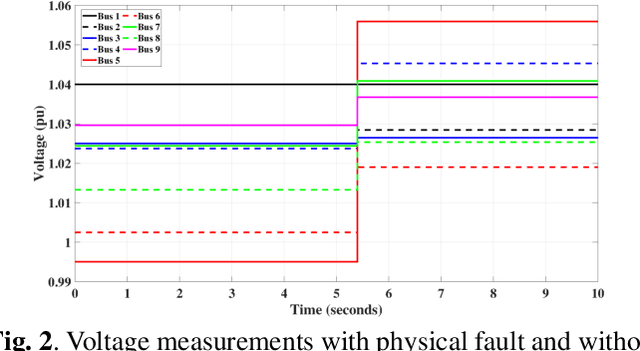
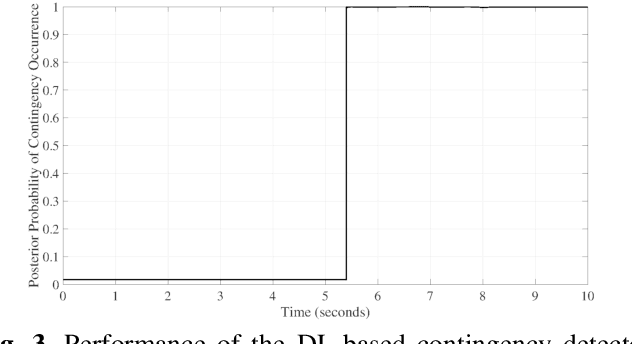
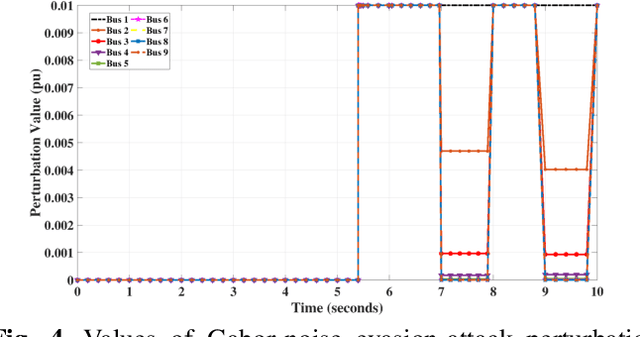
Abstract:Due to the advances in computing and sensing, deep learning (DL) has widely been applied in smart energy systems (SESs). These DL-based solutions have proved their potentials in improving the effectiveness and adaptiveness of the control systems. However, in recent years, increasing evidence shows that DL techniques can be manipulated by adversarial attacks with carefully-crafted perturbations. Adversarial attacks have been studied in computer vision and natural language processing. However, there is very limited work focusing on the adversarial attack deployment and mitigation in energy systems. In this regard, to better prepare the SESs against potential adversarial attacks, we propose an innovative adversarial attack model that can practically compromise dynamical controls of energy system. We also optimize the deployment of the proposed adversarial attack model by employing deep reinforcement learning (RL) techniques. In this paper, we present our first-stage work in this direction. In simulation section, we evaluate the performance of our proposed adversarial attack model using standard IEEE 9-bus system.
Using Machine Learning to Predict Engineering Technology Students' Success with Computer Aided Design
Aug 12, 2021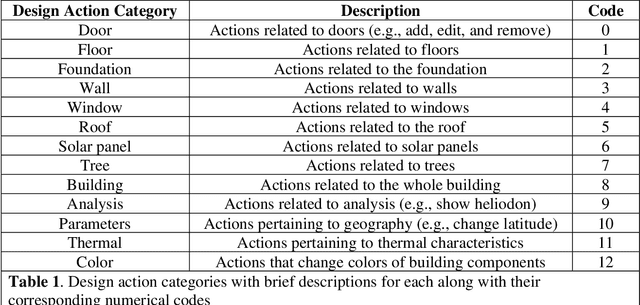
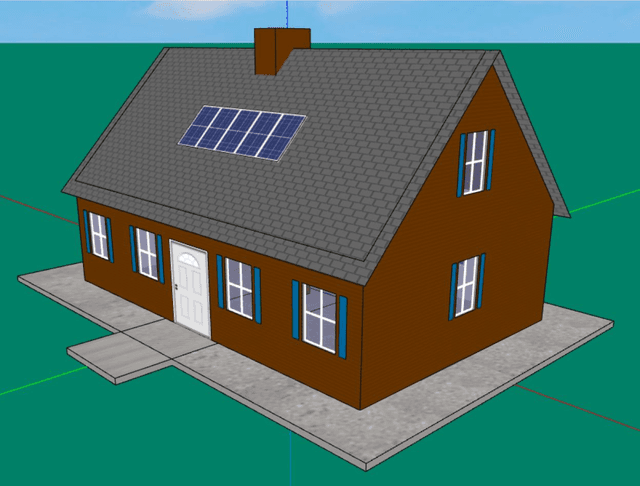
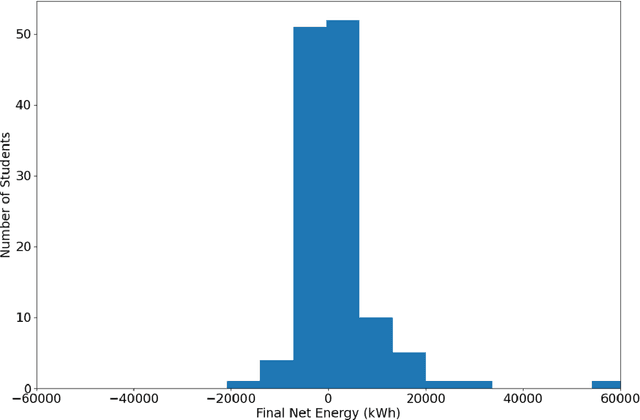
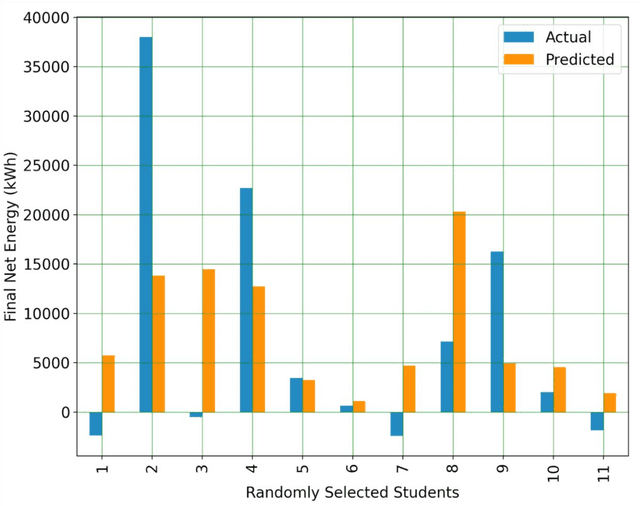
Abstract:Computer-aided design (CAD) programs are essential to engineering as they allow for better designs through low-cost iterations. While CAD programs are typically taught to undergraduate students as a job skill, such software can also help students learn engineering concepts. A current limitation of CAD programs (even those that are specifically designed for educational purposes) is that they are not capable of providing automated real-time help to students. To encourage CAD programs to build in assistance to students, we used data generated from students using a free, open source CAD software called Aladdin to demonstrate how student data combined with machine learning techniques can predict how well a particular student will perform in a design task. We challenged students to design a house that consumed zero net energy as part of an introductory engineering technology undergraduate course. Using data from 128 students, along with the scikit-learn Python machine learning library, we tested our models using both total counts of design actions and sequences of design actions as inputs. We found that our models using early design sequence actions are particularly valuable for prediction. Our logistic regression model achieved a >60% chance of predicting if a student would succeed in designing a zero net energy house. Our results suggest that it would be feasible for Aladdin to provide useful feedback to students when they are approximately halfway through their design. Further improvements to these models could lead to earlier predictions and thus provide students feedback sooner to enhance their learning.
 Add to Chrome
Add to Chrome Add to Firefox
Add to Firefox Add to Edge
Add to Edge